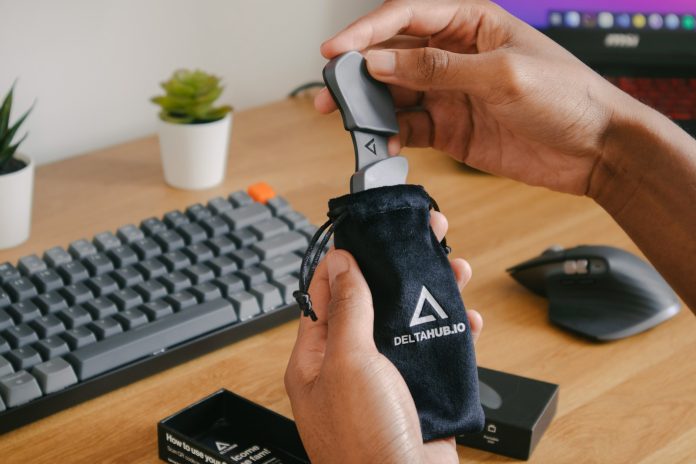Introduction
In the age of social media, influencers have become the new celebrities. These digital personalities, who amass large followings by sharing content on platforms like Instagram, YouTube, and TikTok, wield significant power over public opinion and consumer behavior. Their influence extends far beyond the digital world, impacting fashion trends, beauty standards, and even social and political movements. However, with this immense power comes the potential for misuse, leading to a phenomenon that has been coined “InfluencersGoneWild.”
“InfluencersGoneWild” refers to situations where influencers engage in irresponsible, unethical, or outright dangerous behavior. This can range from promoting harmful products to participating in illegal activities. As the line between online persona and real-life actions becomes increasingly blurred, the consequences of such behavior can be far-reaching. This article explores the factors that contribute to influencers going wild, the repercussions for both the influencers and their audiences, and what can be done to prevent these incidents from occurring.
The Evolution of the Influencer Phenomenon
From Niche Bloggers to Mainstream Powerhouses
The concept of the influencersgonewild has evolved significantly over the past decade. What began as a niche community of bloggers and vloggers has grown into a multi-billion-dollar industry that touches nearly every aspect of modern life. Influencers are no longer just hobbyists; they are entrepreneurs, brand ambassadors, and media moguls. Their ability to connect with audiences on a personal level has made them invaluable to marketers looking to reach consumers in an authentic and engaging way.
The rise of social media platforms has played a crucial role in the expansion of influencer culture. Instagram, with its focus on visual content, has been particularly influential in the fashion and beauty industries. YouTube has given rise to a new generation of content creators who produce everything from makeup tutorials to in-depth commentary on social issues. TikTok, the newest platform on the scene, has democratized content creation even further, allowing users to go viral with just a few seconds of video.
As influencers have gained more power and visibility, the stakes have risen accordingly. With millions of followers hanging on their every word, influencersgonewild have the ability to shape public discourse and drive significant changes in consumer behavior. However, this influence is a double-edged sword. The pressure to maintain relevance and continue growing their audience can lead some influencers to make questionable decisions, putting their careers—and sometimes their audiences—at risk.
The Pressure to Stay Relevant
In the fast-paced world of social media, relevance is everything. Algorithms change, trends come and go, and audiences are constantly seeking new and exciting content. For influencers, the pressure to stay relevant is relentless. Many feel the need to constantly push boundaries, whether through daring stunts, controversial opinions, or the promotion of the latest fad products.
This pressure can lead to burnout, anxiety, and a willingness to take risks that may not align with an influencersgonewild personal values or the expectations of their audience. The need to keep up with the competition and maintain a steady stream of content can result in a kind of tunnel vision, where the pursuit of fame and success overshadows considerations of ethics and responsibility.
The Dark Side of Influence: When Things Go Too Far
The Consequences of Irresponsible Behavior
The term “InfluencersGoneWild” encapsulates the darker side of the influencer phenomenon, where the quest for fame and fortune leads to reckless or unethical behavior. This can take many forms, from promoting dangerous or harmful products to engaging in illegal activities or exploiting vulnerable followers. The consequences of such behavior can be severe, both for the influencers themselves and for their audiences.
One of the most significant risks associated with influencer culture is the potential for harm to audiences, particularly younger followers who may be more impressionable. When influencers promote questionable products, such as unregulated supplements or dubious “miracle cures,” they may be putting their followers’ health at risk. Similarly, when influencers participate in or encourage dangerous stunts, they may inadvertently inspire others to do the same, with potentially tragic results.
For the influencers involved, the fallout from going wild can be equally damaging. Reputational damage, loss of sponsorships, and legal consequences are just a few of the potential repercussions. In some cases, influencersgonewild who have gone too far may find themselves facing lawsuits, criminal charges, or permanent bans from social media platforms. Even if they manage to avoid legal trouble, the loss of trust from their audience can be difficult, if not impossible, to recover from.
High-Profile Examples of Influencers Gone Wild
There have been numerous high-profile cases of influencers going wild, each highlighting the potential dangers of unchecked influence. One such case involved an Instagram influencer who promoted a “miracle” weight-loss tea to her millions of followers, despite knowing that the product was not approved by health authorities and could cause serious side effects. When the truth came to light, the influencer faced public outrage, legal action, and the loss of several lucrative brand partnerships.
Another notorious example is the case of a YouTube prankster who staged a fake bank robbery as part of a viral stunt. The prank quickly spiraled out of control, leading to a police investigation and criminal charges against the influencer. The incident sparked a broader conversation about the ethics of prank videos and the potential for harm when influencers prioritize views and clicks over common sense.
These cases, and others like them, serve as cautionary tales about the dangers of influencers gone wild. They also underscore the need for greater accountability within the influencer community, as well as more robust safeguards to protect audiences from harmful content.
The Impact on Society and Culture
Eroding Trust in the Influencer Industry
The phenomenon of influencers going wild has broader implications for the influencer industry as a whole. One of the most significant impacts is the erosion of trust between influencers and their audiences. Trust is the foundation of the influencer-follower relationship; when influencersgonewild behave irresponsibly, that trust is compromised. As a result, audiences may become more skeptical of the content they consume, leading to a decline in engagement and a potential backlash against the influencer industry.
This erosion of trust can also have financial implications. Brands that rely on influencers to promote their products may find themselves facing negative publicity if those influencers are involved in scandals or controversies. In some cases, brands may choose to distance themselves from influencers who have gone wild, resulting in lost revenue and damaged reputations.
The Normalization of Risky Behavior
Another troubling consequence of the InfluencersGoneWild phenomenon is the normalization of risky or unethical behavior. When influencers engage in dangerous stunts or promote questionable products, they set a precedent for their followers, particularly younger and more impressionable audiences. This can lead to a culture where risky behavior is seen as not only acceptable but desirable, further perpetuating the cycle of irresponsibility.
The normalization of such behavior can have serious real-world consequences. For example, the promotion of unregulated supplements or extreme diets can lead to health problems for followers who take influencers’ advice without question. Similarly, the glorification of dangerous stunts can result in injuries or even fatalities when followers attempt to replicate what they see online.
The Role of Social Media Platforms and Regulations
The rise of influencersgonewild has also raised questions about the role of social media platforms and the need for regulation. While platforms like Instagram, YouTube, and TikTok have implemented policies to address harmful content, enforcement remains inconsistent. In many cases, it is left to the platforms themselves to determine what constitutes acceptable behavior, leading to accusations of bias or inadequate oversight.
Regulatory bodies, such as the Federal Trade Commission (FTC), have also stepped in to address some of the issues associated with influencer marketing. The FTC’s guidelines on disclosure and transparency are designed to protect consumers from misleading or deceptive practices. However, compliance is not always enforced, and there is ongoing debate about whether more stringent regulations are needed to hold influencers accountable for their actions.
Preventing Influencers from Going Wild
Encouraging Ethical Content Creation
One of the most effective ways to prevent influencers from going wild is to encourage ethical content creation from the outset. This involves educating influencers about the potential consequences of their actions and the importance of maintaining a sense of responsibility towards their audiences.
This education can take many forms, from formal training programs to mentorship initiatives within the influencer community. Influencers who have established themselves as responsible and ethical content creators can play a key role in guiding newcomers, helping them navigate the challenges of maintaining relevance while staying true to their values.
The Importance of Transparency and Authenticity
Transparency and authenticity are crucial in maintaining the trust of followers and preventing influencersgonewild. Influencers who are open about their motivations, partnerships, and the potential risks associated with their content are more likely to maintain the respect and loyalty of their audience. This transparency can also help prevent misunderstandings or misinterpretations that could lead to controversy.
Authenticity, in particular, is a key factor in building and maintaining trust. Influencers who present an honest and relatable version of themselves are more likely to resonate with their audience, reducing the pressure to engage in risky or unethical behavior in order to stand out. By staying true to themselves and their values, influencers can build a lasting connection with their followers that is based on mutual respect and understanding.
The Role of Audiences in Holding Influencers Accountable
Finally, audiences play a crucial role in holding influencers accountable. Social media users have the power to demand transparency, call out unethical behavior, and even organize boycotts or campaigns against influencers who cross the line. This collective action can be a powerful force for change, encouraging influencers to act responsibly and consider the impact of their actions.
Audiences can also support ethical influencers by engaging with and promoting content that aligns with their values.
Conclusion
The phenomenon of “InfluencersGoneWild” serves as a stark reminder of the double-edged nature of online fame. While the influencer industry has brought about numerous positive changes, including the democratization of content creation and the rise of diverse voices, it also comes with significant risks. When influencers prioritize fame and financial gain over ethics and responsibility, the consequences can be far-reaching, affecting not only the influencers themselves but also their audiences and the broader digital landscape.
To mitigate these risks, it is essential for influencers to embrace ethical content creation, maintain transparency and authenticity, and prioritize the well-being of their followers. Social media platforms and regulatory bodies must also play a more active role in enforcing standards and preventing harmful behavior. Ultimately, audiences have the power to shape the future of influencer culture by holding influencers accountable and supporting those who use their platforms responsibly.



